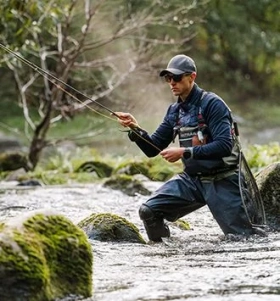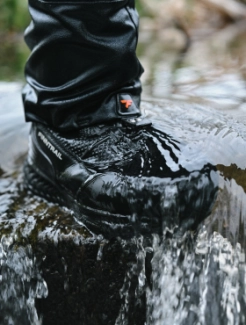How to Charge Electric ATVs
One of the top questions people have about electric ATVs is how you charge them. That’s an excellent question. In many ways, it is easier than you probably expect, but there are some key things to know and remember to make sure you have a great ride, or ride at all. Read this post on how to charge electric ATVs.

Charger for Electric Quad
Your electric ATV will come with a charger. That electric ATV charger will have an indicator light that changes color to tell you the vehicle is charging and to let you know when it is ready to ride. This is typically red for charging and green for ready.
One end of the electric quad charger plugs into your regular three-prong household outlet. The other plugs into the ATV via a charging port. The port has a ring that can be screwed on to hold the cord in place, but you might not want to screw it on. It isn’t necessary and it could damage the connecting wires if you over tighten. If you feel you need to screw it in, just do so lightly.
Charging Process for Battery 4 Wheelers
First, make sure to charge your ATV somewhere with plenty of ventilation, to prevent the buildup of hydrogen gas while the battery is charging. No flammable materials should be near the ATV because this hydrogen gas can ignite.
While it’s tempting to do this outdoors. You will be inviting theft and your battery will be more subject to temperature changes. It’d be best to have a garage or shed to charge your ATV.
It usually takes around 6-8 hours for an ATV to charge, but it can take up to 12 hours. Most people charge electric ATVs overnight. You’ll want to charge your ATV after every ride and anytime it is holding 80% or less charge. Batteries slowly lose charge when they aren’t being used, so you’ll need to periodically check it when you aren’t riding.
How fast your battery charges depends on several factors. Of course, how much charge it already has plays a part. The type of battery, the temperature of the environment where you’re charging your ATV, and the quality of the charger all impact how fast it charges. Most chargers and batteries will charge in 6-8 hours.
You can increase charging speed 5-8 times by plugging your ATV into a 240-volt outlet, but you’ll probably need to hire an electrician to help you set that up.
How Much Does It Cost to Charge a Battery Powered ATV?
You’re probably expecting it to be expensive, but it’s really fairly cheap. It costs about the same amount as running your air conditioner for 6 hours, which is significantly less expensive than how much you have to pay for gas to run an ATV. So, even if you ride all of the time, your electric bill increase won’t break the bank.
Understanding Your Battery Powered 4 Wheeler
Breaking in battery powered four wheelers
Your electric ATV won’t be able to hold 100% charge until you’ve charged it 50-125 times. Until then, it can only hold 80% capacity. You’ll need to calculate that into your range and riding style.
How you ride impacts ATV range
Riding aggressively, such as hitting brakes excessively hard or fast, driving top speeds, and using more power when pulling more weight or tackling tougher terrain use more battery charge than lighter use. You’ll have to figure this into your range.
How long ATV batteries last
ATV batteries are intended to last as long as the expected life of the ATV. You’re not supposed to have to replace your battery. It can happen if your battery is damaged or something else unexpected occurs. Should that happen, you can recycle your battery and get reimbursement that will help you pay for the new battery.
You can extend the life of your battery by as much as 4 years with proper battery maintenance, which will make it even more unlikely that you’ll ever have to replace it.
Older batteries do start holding less charge. After about 6 years, you will probably start to notice that your battery is only holding 80% charge again.
Temperatures and batteries
Temperatures impact your batteries while they’re charging and when you want to ride.
Electric batteries can freeze, and if the internal temperature of the battery reaches 14F, you will have to start charging it to heat it up enough to get it to start.
Charging increases a battery’s temperature anywhere from 17-27F per hour.
When you’re riding in colder weather, you’ll have up to a 30% reduction in range, and if you’re charging your ATV in cooler temperatures, it won’t receive a full charge.
Batteries prefer warmer temperatures, anything above 50F, but in hot temperatures, your battery will lose its charge faster.
Why a battery powered four wheeler didn’t charge
Sometimes you wake up thinking you charged your electric ATV and discover you didn’t. This could be because you didn’t insert either plug right, the outlet is malfunctioning, or your charger overheated. If your charger overheats, it shuts down to prevent damage. You can open the hood to give your charger more air and reset the charger to get it working again.
It's a good idea to check the indicator light on your charger before walking away from your ATV to be sure it’s charging.








































